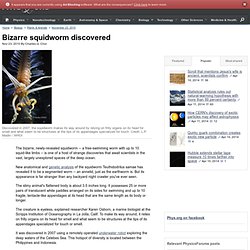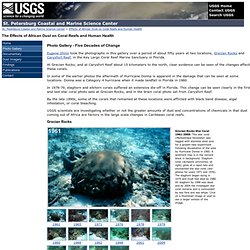

Molecular Movies - Showcase. Mandarinfish #10, Synchiropus splendidus. 7.014 Introductory Biology. Kunstformen der Natur. StemBook. The Genetic Gamesmanship of a Seven-Sexed Creature. What could be better than two types of sexes?

For one organism, the answer isn’t three, but seven! And to top it off, these seven sexes aren’t evenly distributed in a population, although researchers have now developed a mathematical model that can accurately estimate the probabilities in this crap-shoot game of sexual determination. Meet Tetrahymena thermophila, which in addition to its seven different sexes—conveniently named I, II, III, IV, V, VI, and VII—has such a complex sex life that it requires an extra nucleus. This fuzzy, single-celled critter has a larger macronucleus that takes care of most cellular functions and a smaller micronucleus dedicated to genetic conjugation. The other odd thing about this one-celled wonder is that the population of the seven sexes are skewed, leading Unversity of Houston researcher Rebecca Zufall and her colleagues to ask: What gives?
Related Content: 80beats: What Makes a Boy Lizard? Image: Wikimedia Commons / Ayacop. Bizarre squidworm discovered. The bizarre, newly-revealed squidworm -- a free-swimming worm with up to 10 squid-like limbs -- is one of a host of strange discoveries that await scientists in the vast, largely unexplored spaces of the deep ocean.

New anatomical and genetic analysis of the squidworm Teuthidodrilus samae has revealed it to be a segmented worm -- an annelid, just as the earthworm is. But its appearance is far stranger than any backyard night crawler you've ever seen. The slimy animal's flattened body is about 3.5 inches long. It possesses 25 or more pairs of translucent white paddles arranged on its sides for swimming and up to 10 fragile, tentacle-like appendages at its head that are the same length as its body or longer. Photo Gallery - The Effects of African Dust on Coral Reefs and Human Health. Eugene Shinn took the photographs in this gallery over a period of about fifty years at two locations, Grecian Rocks and Carysfort Reef, in the Key Largo Coral Reef Marine Sanctuary in Florida.

At Grecian Rocks, and at Carysfort Reef about 15 kilometers to the north, clear evidence can be seen of the changes affecting these corals. In some of the earlier photos the aftermath of Hurricane Donna is apparent in the damage that can be seen at some locations. Donna was a Category 4 hurricane when it made landfall in Florida in 1960. In 1978-79, staghorn and elkhorn corals suffered an extensive die-off in Florida. This change can be seen clearly in the first and last star coral photo sets at Grecian Rocks, and in the brain coral photo set from Carysfort Reef.
By the late 1990s, some of the corals that remained at these locations were afflicted with black band disease, algal infestation, or coral bleaching. Grecian Rocks Carysfort Reef. Coral reef, photos of coral reef, coral reef pictures, Mexichromis multituberculata - Nudibranch. Reef Ball Foundation: Getting Grants For Your Project.
PrimordialDesign.jpg (JPEG Image, 1738 × 720 pixels) - Scaled (73%) Indonesia Undersea Sights and Sounds. Bold Beachgoers Save a Stranded Great White Shark. Photo: Ruth Fahey At sea, sharks are one of the most fearsome and cunning predators on the planet -- but on land, even they need a helping hand sometimes.

In a rare putting aside of differences, last week a surfer came to the aid of a Great White shark that had become stranded onshore. Risking life, and especially limb, he and another beachgoer worked tirelessly to return the ten foot long shark to the ocean. The brave rescue caught the attention of a photographer, who thought at first that the beached animal was a dolphin.
"Then I got closer and saw it was this huge shark and just thought, 'Holy crap! '" It may have started off as a normal day at the beach for Andrew Eckersley in New South Wales, Australia, before he happened upon quite an usual sight -- a solitary surfer trying to save a beached Great White shark, large enough perhaps, to make a meal out of him if the two had met at sea. Watch Video: Reel Impact: Sharkwater Eckersley, to the Daily Telegraph: It was pretty scary at first. Scientists discover new species in one of world’s deepest ocean trenches. Scientists investigating in one of the world's deepest ocean trenches -- previously thought to be void of fish -- have discovered an entirely new species.

The findings by a team of marine biologists from Aberdeen, Tokyo and New Zealand, have shed new light on life in the deepest places on Earth and the global distribution of fish in our oceans. The expedition to the Peru-Chile trench in the South East Pacific Ocean revealed a new species of snailfish living at 7000m, never before caught or captured on camera. Mass groupings of cusk-eels and large crustacean scavengers were also discovered living at these depths for the first time. Johnsen Lab - Benthic Species. …free your imagination… Marine Biology with Odyssey Expeditions - Tropical Marine Biology Voyages!